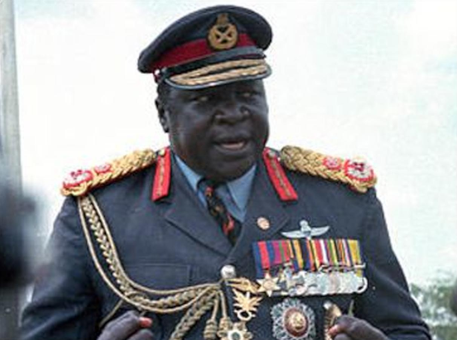Scottish Nobility, Scottish Royalty, and Africa

You may have heard that Idi Amin, the dictatorial president of Uganda from 25 January 1971 to 11 April 1979, also claimed the title of “Last King of Scotland.”
Years ago a person I work with read the book of the same title by Giles Foden. It ends with a suggestion that there may be some vague justification for Amin’s claim of royal lineage from beyond his vivid imagination.
That intrigued him. After some digging I found a reference to the first record of a Black king of Scotland:
The First Record of a Black King of Scotland
His name was Dub mac Maíl Coluim (Modern Gaelic: Dubh mac Mhaoil Chaluim, Scottish Gaelic pronunciation: [ˈt̪uˈmaʰkˈvɯːlˈxaɫ̪ɯm]), sometimes anglicised as Duff MacMalcolm, called Dén, “the Vehement” and, “the Black ” (born c. 928 – died 967) was king of Alba. Dub, King of Scotland. Dub mac Maíl Coluim, or Dén the Black, ruled Scotland from 962 to 967. His predecessor was Indulf and his successor was Cuilén.
The historical Lady Macbeth’s real name was Gruoch, born around 1005, and she was a direct descendant of the Gaelic kings of Scotland. Macbeth’s claim to the throne came through his marriage to her as she was said to have already been in line to the throne long before he married her.
The House of Stuart, also spelt Stewart or Steuart, was the royal house of Scotland from 1371 and of England from 1603. It was interrupted in 1649 by the establishment of the Commonwealth but was restored in 1660.
Her Majesty Queen Elizabeth the Second is bound to Scotland by ties of ancestry, affection and duty. She is descended from the Royal House of Stewart on both sides of her family.
Further intrigued led to further digging. I came up with stories about one John Campbell, Earl of Loudoun, a parish in East Ayrshire, Scotland.
From the description of John Campbell in a letter to William Johnson, 1757. (New-York Historical Society Library). WorldCat record id: 713564371: John Campbell, 4th Earl of Loudoun (1705-1782): commander-in-chief of British forces in America during the French and Indian War and titular governor of Virginia. He was recalled to England in 1758, following the downfall of his patron, Duke of Cumberland. He served in Portugal in 1762 and was promoted to general in 1770.
And this undated bookplate, from an unknown volume, WorldCat record id: 166429049
“John Campbell, Earl of Loudoun, was commander-in-chief of the British army in North America and colonial governor of Virginia from 1756-1757. He was recalled in late 1757. Sir William Johnson, Bart., was a major-general in the British army, adopted as a Mohawk and given a Mohawk name during his time in New York, and made a baronet in 1757.” No mention of the connection between Campbell and Johnson, but I found the latter’s adoption by people of color to be interesting. I do seem to recall that someone named Johnson got the Iroquois to join the British in the war that became the French and Indian War.
A story about the Earl of Loudoun appeared in London Magazine or Gentleman’s Monthly Intelligencer, Volume XXVI, comprising issues for the year 1757 about The Right Honorourable the Earl of Loudoun, Captain General & Governour in Chief of his Majesty’s Forces in North America.
Here’s his image from that story:

